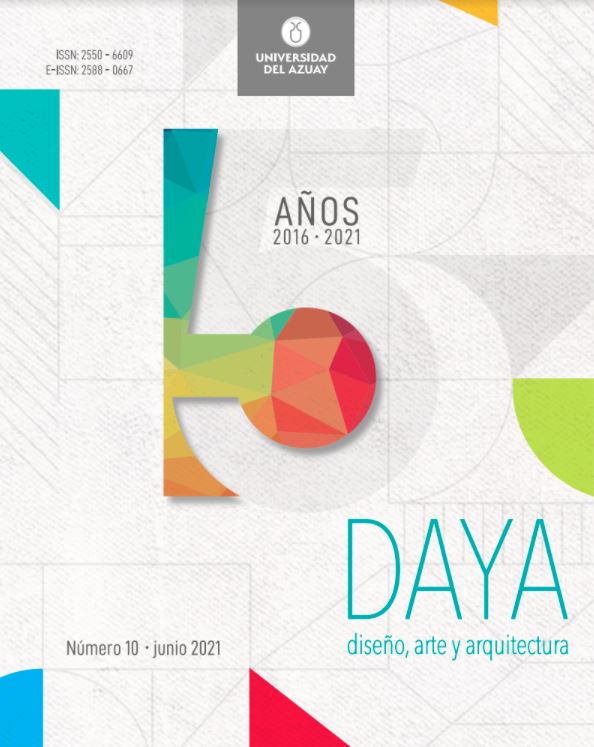MODELO DE EVALUACIÓN EN LA INTERVENCIÓN DE ESPACIOS COMERCIALES, BAJO CRITERIOS DE CONSTRUCCIÓN SUSTENTABLE
DOI:
https://doi.org/10.33324/daya.v1i10.379Parole chiave:
Economía circular, diseño, huella de carbono, indicadores ambientales, metodologíaAbstract
Los problemas ambientales, en nuestro tiempo, son el efecto de un proceso lineal insustentable de producción, explotación de recursos y generación de residuos que están agotando la naturaleza. Por ello, tomar medidas urgentes es de suma importancia.
La presente investigación pretende desarrollar un modelo de evaluación que nos lleve a identificar y cuantificar el consumo energético y emisión de CO2 de los materiales utilizados en propuestas de diseño interior en espacios comerciales, principalmente restaurantes y cafeterías de la ciudad de Cuenca, Ecuador. Esta investigación se aplicará en tres intervenciones de remodelación comercial para: determinar el grado de impacto ambiental y comparar con otras soluciones y, así, tomar decisiones acertadas al momento de desarrollar los proyectos. El modelo de evaluación que se propone, para cuantificar el consumo energético y emisión de CO2 de los materiales derivados de su fabricación, no incluye transporte ni puesta en obra. Este será una herramienta que permita desarrollar propuestas sustentables, con disminución de energía consumida y emisiones de CO2, al sustituir los materiales utilizados por otros con menor impacto.
Palabras clave: Economía circular, diseño, huella de carbono, indicadores ambientales, metodología.
Abstract
Environmental problems of our time are the result of a linear, unsustainable process of production, exploitation of resources, and generation of waste, which is exhausting nature. Therefore, taking urgent action is of the utmost importance. This research aims to develop an evaluation model to identify and quantify the materials used in interior design projects for commercial spaces, mainly restaurants and cafeterias, in the city of Cuenca, Ecuador. This research will be applied in three commercial remodeling interventions, to determine
the degree of environmental impact and compare it with other solutions and thus, make the right decisions when using them. The proposed evaluation model to quantify the energetic consumption and CO2 emissions of the materials derived from its manufacture does not include transport or commissioning. This tool will allow the development of sustainable proposals, managing to reduce the amount of energy consumed and CO2 emissions from the manufacturing process, by replacing the materials used with others with less impact.
Keywords: Circular economy, design, carbon footprint, environmental indicators, methodology



